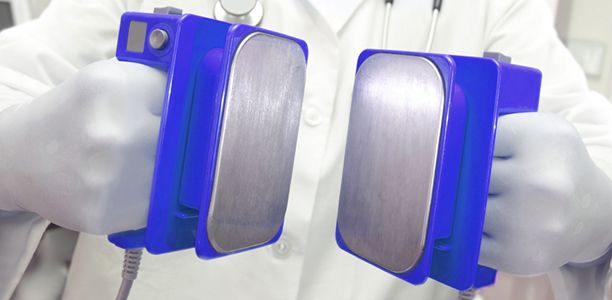Defibrillators to be available in all NSW schools thanks to Professor Chris Seminarian’s campaign.
University of Sydney cardiologist Professor Chris Semsarian has lobbied policy makers for more than a decade to end the red tape that has prevented the presence of defibrillators in New South Wales government schools.
This week, NSW Premier Mike Baird showed his full support of the tireless campaign with his decision to overturn the NSW Department of Education policy and allow defibrillators and comprehensive CPR training in all schools in NSW.
This policy change will help to save the lives of the three to four young Australians who die from sudden cardiac death every week.
The Department’s policy did not support the use of defibrillators in NSW government schools even though they are commonplace in private schools, sporting clubs and workplaces.
The policy change, due to take effect in the 2016 school year, will help to prevent the deaths of young Australians who die from sudden cardiac arrest, often while competing on sports fields or in school swimming carnivals.
“This is a landmark decision by the Baird government which will save the lives of many young Australians and give parents greater confidence in the state’s education system,” said Professor Semsarian.
“I am so pleased and excited that just maybe, I will see fewer parents at my clinics each week who have tragically lost a son or daughter from sudden cardiac arrest.
“This is a really big step forward that could save the lives of not only children, but potentially parents, teachers and community members who may suffer cardiac arrest near a school.
The news is greatly welcomed by those who have led the long campaign to urge policy makers to change the out-dated rule including Professor Semsarian, families who have lost young relatives to sudden cardiac arrest, University of Sydney, Channel 7, Daily Telegraph and many more.
“Young Australians are dying every week from sudden cardiac death and many of these deaths can be prevented if there is quick access to a defibrillator,” Professor Semsarian said.
“Many young victims are fit and healthy but have undetected, underlying heart conditions. Sadly, sudden cardiac death is often the first presentation of a heart problem.
“Their best chance of survival is early defibrillation and CPR. Every minute that passes their chance of survival drops by about 15%.”
What is a defibrillator?
- A defibrillator is an electrical device that delivers a shock to the heart.
- The aim of the shock to the heart muscle is to re-establish the heart’s rhythm and regularly beat.
How does it work?
- Pads from the defibrillator are placed on the patient’s chest and a built-in computer checks the victim’s heart rhythm.
- The device determines whether a shock is needed.
- Most devices have an automated voice to tell the rescuer the next step, for example stand clear and press the device’s shock button.
(Source: The University of Sydney)










